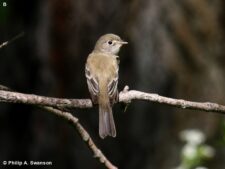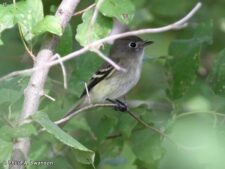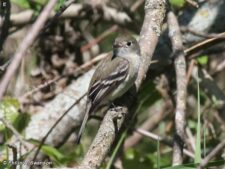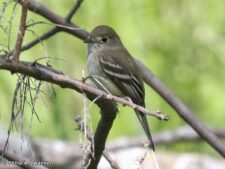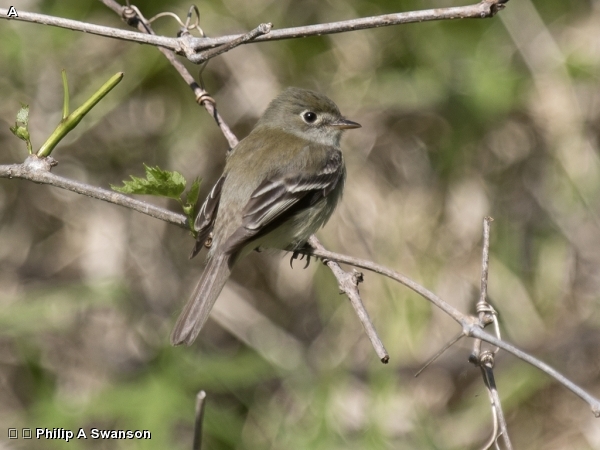
5.25 inches long. The Least Flycatcher is the smallest Empidonax flycatcher, It has a bold white eye ring. The underside of the lower bill is mostly pale. The upperparts are brownish-olive and the breast has an olive wash. The throat, belly, and undertail are whitish. There are white wing bars in the adults. The wing bars are buffy in immature birds. The wings exhibit a rather short primary extension. The Least Flycatcher has a small bill that makes its rounded head look big. Differences in plumage due to molt, wear and age make the plumage quite variable. It is best identified by its call. This is one of five small “Empids” (Empidonax Flycatchers) that may show up in the Forest. The Yellow-bellied Flycatcher (Empidonax flaviventris) is similar in size and shape but is greener above and yellower below. Willow (Empidonax traillii) and Alder (Empidonax alnorum) flycatchers have less obvious eye rings, longer tails and browner upperparts. The Acadian Flycatcher (Empidonax virescens) is larger, bigger-billed, greener above, and yellower below.
The Least Flycatcher is relatively common during spring migration. It is the earliest arriving “Empid”. It appears in late April through mid to late May and again in mid August through mid September.
The Least Flycatcher is one of the most common “Empids”. Least Flycatchers are very aggressive and such aggression may also partially explain why the Brown-headed Cowbird parasitizes this flycatcher only infrequently. Even during migration this bird is very vocal and often sings its characteristic “chebec” song.
Disclaimer: The content of NatureSearch is provided by dedicated volunteer Naturalists of Fontenelle Forest who strive to provide the most accurate information available. Contributors of the images retain their copyrights. The point of contact for this page is: Phil Swanson.

